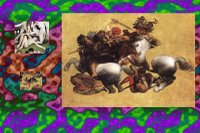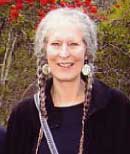The Alchemist (nos.
8 and
9 in the
el bosco miscellanea blog) is no. 197 in René van Bastelaer,
The Prints of Pieter Bruegel The Elder, Catalogue Raisonné, translated and revised by me (San Francisco: Alan Wofsy Fine Arts, 1992), and the following is excerpted from a computer backup copy. Bastelaer attributed the engraving to Philip Galle. The first state, published by Hieronymus Cock, had a vague and obscure Latin legend:
DEBENT IGNARI RES FERRE ET POST OPERARI
IVS LAPIDIS CARI VILIS SED DENIQUE RARI
VNICA RES CERTA VILIS SED VBIQUE REPERTA
QVATUOR INSERTA NATURIS IN NVBE REFERTA
NVLLA MINERALIS RES EST VBI PRINCIPALIS
SED TALIS QUVALIS REPERITVR VBIQUE LOCALIS
Cock apparently published a revised state with
lospital added to identify the hospital, and a lament by the amateur alchemist in French, printed on a separate strip of paper and pasted underneath the Latin verses:
L’art Alchemiste ha son nom bien à plain,Le bien d’autruy & le nostre s’y pert,De faim mourons, n’ayant pitance ou painTous dessires allons comme il appertMalheureux est qui à tel art s’assert.Voyez en hault comme bien cont receuzPar Madame la bonne hospitalliereTous ceulx qui sont par cest art cy deceuzComme la chose est bien coustumiere,Hereulx sont ceulx qui s’en tirent arriere.Ceste fois cy encoir’veulx je esprouuerDe cherchcr l’art, cest tout mon pensementSi à coup je ne le puis truuerIe brusleray mes livres, puis vrayementA l’hospital men yray briefuement.I’enraige au vif voyant que nostre bienPar ce sot cy en la cendre demeureCrediet perdons, en bourse n’auons rienEn la fumee est tout fondu pour l’heureA l’hospital irons, cest chose seure.On a third state, Hieronymus Cock's name was erased. The fourth and fifth states, published by T. Galle and I. Galle, still have the Latin (at least in the T. Galle version illustrated on p. 265) but also have have even simpler bilingual French and Dutch captions that call the alchemist a fool:
Voy comme ce folastre en ses fioles distilleLe sang de ses enfans, ses tresors et ses sens;Voy comme il cherche apres la recherche inutileDu mercure son pain aueque ses enfants.Den Alcomist “seer veel verquist” aen goet en tytGhelt, goet en schat “heeft hy ghehat” maer is nu quytHy vint int vier “gans niet een sier” dat syn bederuenIn d’eynde dan “moet hy erm man” int gasthuys steruen.







